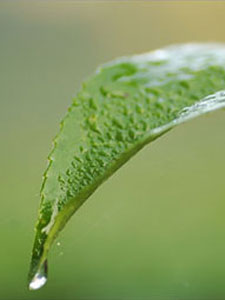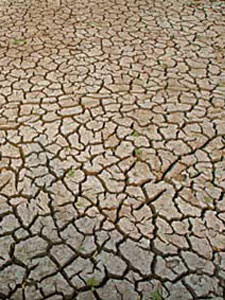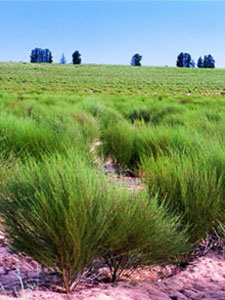Climate Change - Changing Tea?

Climate change will impact crops around the world in many different ways, from the amount of rainfall an area receives to shifts in temperature and overall climate patterns. What might happen to our favorite crop, tea?
The answer is, it depends. Some areas will see a boon to tea production, while others will find it more difficult to grow tea at the same level as today. Local microclimate can vary sharply between farms, making it difficult to generalize.
A variety of research organizations are studying the impact of climate change on tea, including the Tea Research Association of India, which operates Tocklai Experimental Station in Jorhat, the Sri Lanka Association for the Advancement of Science and the Tea Research Institute, the International Centre for Tropical Agriculture (CIAT), and the Tea Research Foundation of Kenya, among many others.
Scientists at the Tea Research Association have seen minimum temperatures in the Assam region rise by 2°C over the last 80 years while rainfall has decreased, leading to overall production declines. A decrease in the production of tea plants means that more land is likely to be put into tea cultivation to make up the difference. Last year, there were fewer days with sunshine during the monsoon season, which made for damp weather, allowing pests like the tea mosquito bug to proliferate and attack new shoots. Researchers are tracking many variables to see if this trend continues.
Sri Lanka, on the other hand, is expecting more intense rainfall in the future. Researchers predict perhaps a 10% increase in the length of dry and wet seasons per year in the main plantation area. The heavier rainfall brings other concerns - mainly soil erosion in higher elevation areas. Lower elevation areas may become less suitable for tea production. But warmer temperatures coupled with the increased rainfall could also make new areas suitable for tea cultivation; mountain areas and wetter zones will likely have increased tea production.

Tea plantations in China's Fujian region are encountering problems with droughts and flash floods. Other tea producing areas are experiencing similar changes to their weather patterns. Much of southern China has experienced higher temperatures and droughts in the last century, including the Yunnan and Sichuan provinces. The U.N. Food and Agriculture Organization says that the current drought conditions are the worst in more than 60 years, but little information exists in English on how climate change is affecting Chinese tea production.
African tea production, especially in East Africa, is expected to shift to higher altitudes over the next 40 years, and is very likely to decrease since much of that land is protected under conservation laws. Kenyas rainfall and temperatures are expected to increase moderately in the next ten to twenty years, but CIAT researchers do expect some areas, like around Mount Kenya, to remain suitable for tea production through 2050. In South Africa, rooibos tea production is threatened by more frequent droughts, as it is cultivated only in a small area in the western part of the country. Rainfall patterns have changed, so researchers have been focusing on soil and water conservation strategies. But the wild rooibos plant seems to be much more drought tolerant, and while its harvesting schedule is different than cultivated rooibos, scientists think it might aid in the rooibos industrys adaption to climate change.

Researchers are not yet sure if changes in local climates such as increased humidity will affect the way the teas taste permanently, but some professional tea tasters feel that Assams customarily strong taste has weakened in recent years. However, scientists stress that this could also be due to fertilizer use and cultivation techniques. French wineries have noted changes in some of their wines that they attribute to climatic changes, and tea growers are concerned that the same is in store for them.
But the story is not all gloom and doom. Many researchers feel that tea may adapt well to the changing climate. Carbon dioxide content of the air has increased by 1.5ppm per year. This favors the growth of C3 plants like tea, but its not clear whether other factors like increased UV radiation might confound the effect.
Plant breeders are also working to develop tea plants that can better withstand the expected effects of climate change, including more drought tolerant plants. The Tocklai Experimental Station of the Tea Research Association has said it will release two new Assam tea clones during November's World Tea Congress that are drought and water-logging resistant while still retaining Assam's characteristic flavor.
Other strategies being considered or used are adjustments in planting and harvesting dates, integrated pest management, and installation of efficient irrigation systems. Many of the research institutions have extension branches that plan to train tea farmers in adaptive management strategies. Given teas economic importance to many countries, these research initiatives are sure to make an impact on the livelihoods of tea producers across the globe.
